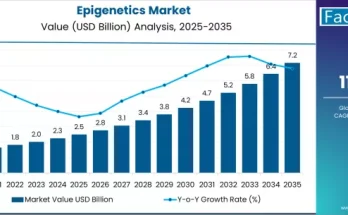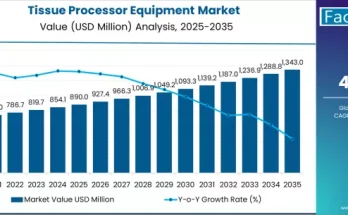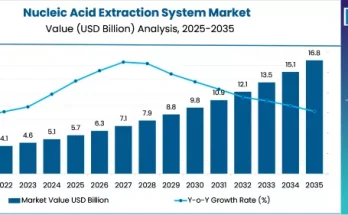Speech impairments can significantly affect an individual’s ability to communicate effectively, impacting social interactions, education, and overall quality of life. Speech generating devices (SGDs) have emerged as transformative tools, enabling individuals with speech difficulties to communicate more independently. The speech generating device market is experiencing rapid growth, driven by technological innovation, increased awareness about speech disabilities, and the rising adoption of assistive technologies across healthcare and educational sectors.
The adoption of SGDs is not just a technological trend but a societal imperative, improving inclusion, autonomy, and quality of life for those living with speech challenges.
Market Overview
The speech generating device market encompasses a variety of products designed to facilitate verbal communication for individuals with speech and language disorders. These devices range from simple communication boards with pre-recorded messages to sophisticated electronic devices equipped with touch screens, voice output, and AI-assisted predictive text systems.
SGDs are particularly beneficial for individuals with conditions such as amyotrophic lateral sclerosis (ALS), cerebral palsy, autism spectrum disorders, and post-stroke aphasia. Modern devices are increasingly incorporating cloud connectivity, AI-based voice synthesis, and customizable interfaces, enhancing usability and accessibility for users with different needs and abilities.
Healthcare providers, rehabilitation centers, and educational institutions are actively integrating these devices into therapy and learning environments, highlighting their growing importance in enhancing communication outcomes.
Key Market Drivers
Several factors are fueling the growth of the speech generating device market:
- Technological Advancements: The development of AI-powered speech synthesis, predictive text algorithms, and portable devices is making SGDs more efficient and user-friendly. Advanced devices offer natural-sounding voice outputs and adaptive communication interfaces that improve the overall user experience.
- Increasing Prevalence of Speech and Communication Disorders: Growing awareness and diagnosis of speech impairments, particularly in children and aging populations, have increased demand for SGDs as essential therapeutic and assistive tools.
- Rising Focus on Inclusive Education: Schools and special education programs are integrating SGDs to ensure that students with speech impairments can actively participate in classroom activities, thereby supporting inclusive education initiatives.
- Supportive Government Policies and Healthcare Initiatives: Governments and healthcare organizations are promoting accessibility and providing funding for assistive technologies, facilitating wider adoption of speech generating devices.
- Growing Awareness Among Caregivers and Healthcare Professionals: As more caregivers and healthcare professionals recognize the benefits of SGDs, demand for these devices is steadily increasing in both home and clinical settings.
Regional Insights
The speech generating device market exhibits significant variation in adoption across regions. North America and Europe are at the forefront due to advanced healthcare infrastructure, higher awareness of speech disabilities, and strong support for assistive technologies. In these regions, collaborations between device manufacturers, research institutions, and healthcare providers are fostering innovation and driving the adoption of cutting-edge SGDs.
Asia-Pacific is emerging as a growing market due to increasing awareness of speech disorders, expansion of healthcare services, and rising investments in assistive technologies. Governments in the region are promoting inclusive education and accessibility initiatives, creating new opportunities for market growth. Meanwhile, regions such as Latin America, the Middle East, and Africa are expected to witness gradual adoption as awareness increases and assistive technology becomes more accessible.
Key Trends
The speech generating device market is rapidly evolving, driven by technological innovation and shifting user needs. Key trends shaping the market include:
- AI-Powered Voice Assistance: Modern SGDs integrate artificial intelligence to provide predictive text suggestions, natural voice synthesis, and personalized communication experiences tailored to individual users.
- Portable and Wearable Devices: The shift toward lightweight, portable, and wearable SGDs enhances convenience, making it easier for users to communicate in a variety of environments.
- Integration with Mobile and Cloud Platforms: Cloud-based systems allow users to store and access personalized communication content from multiple devices, improving accessibility and user customization.
- Focus on User-Centric Design: Manufacturers are prioritizing devices that are easy to use, with intuitive interfaces, customizable icons, and multilingual support, ensuring accessibility for users of all ages and abilities.
- Teletherapy and Remote Communication Support: SGDs are increasingly integrated into teletherapy platforms, allowing speech therapists to provide remote support and monitor progress in real-time.
Applications & End-Use Outlook
Speech generating devices find applications across multiple settings, including hospitals, rehabilitation centers, special education institutions, and home care environments. Hospitals and rehabilitation centers utilize SGDs as part of therapy programs to support patients recovering from neurological injuries, strokes, or surgeries that affect speech.
Special education schools are implementing SGDs to assist children with speech and language disorders, enabling better classroom participation and learning outcomes. In home care, SGDs empower individuals with speech impairments to communicate effectively with family members, caregivers, and peers, improving social interaction and independence.
Corporate and public settings are also exploring SGDs as part of accessibility initiatives, ensuring inclusivity for individuals with speech challenges in professional and social environments.
Challenges
Despite its growth potential, the speech generating device market faces several challenges:
- High Cost of Advanced Devices: Cutting-edge SGDs with AI and predictive capabilities can be expensive, limiting accessibility in low-income regions.
- Training and Technical Support Needs: Effective use of SGDs requires training for both users and caregivers, which may pose adoption barriers in some cases.
- Integration with Existing Systems: Ensuring compatibility with existing therapy programs, healthcare systems, and digital platforms can be challenging for manufacturers.
- Cultural and Language Considerations: Developing devices that accommodate diverse languages, dialects, and cultural nuances remains a key challenge for global adoption.
Recent Developments
The speech generating device market has witnessed several noteworthy developments:
- Introduction of AI-Enhanced Devices: Companies are launching SGDs that leverage AI to adapt communication content based on user behavior, enhancing personalization and efficiency.
- Collaboration Between Tech and Healthcare Companies: Partnerships are accelerating innovation, combining expertise in technology, speech therapy, and assistive care.
- Expansion of Mobile Applications: Mobile apps that function as SGDs provide affordable and portable communication solutions, expanding access for individuals in remote and underserved regions.
- Customization and Accessibility Improvements: Manufacturers are focusing on devices with customizable vocabulary, icons, and voice outputs, ensuring inclusivity for users with diverse needs.
Future Outlook
The future of the speech generating device market is promising, driven by ongoing innovation, increasing awareness, and an emphasis on inclusivity. AI integration, portability, and cloud connectivity will continue to redefine SGDs, making them more accessible, personalized, and effective.
Market growth is expected to be supported by rising adoption in emerging regions, increased funding from governments and non-profit organizations, and growing demand for devices that support independent communication in education, healthcare, and home care environments.
As technology advances, speech generating devices will not only assist individuals with speech impairments but also enhance social inclusion, educational participation, and professional engagement, making communication universally accessible.
Conclusion
Speech generating devices are revolutionizing the way individuals with speech impairments interact with the world. By combining technological innovation with user-centric design, the speech generating device market is addressing a critical need for effective communication.
The ongoing integration of AI, mobile platforms, and personalized interfaces ensures that SGDs continue to evolve, offering enhanced accessibility and usability. For healthcare providers, educators, and caregivers, understanding market trends and technological advancements is essential to selecting the right devices and maximizing their impact.
With continued investment, research, and awareness, speech generating devices will play an increasingly important role in improving communication, independence, and quality of life for millions of individuals worldwide.



